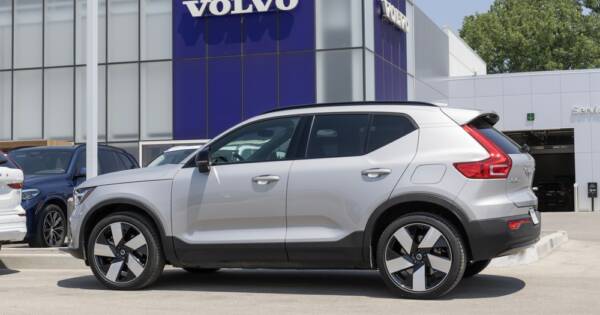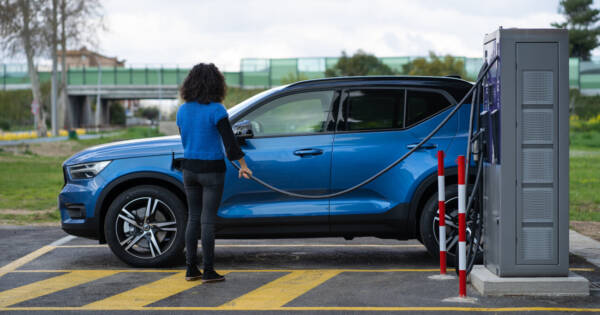The Dodge brothers, Horace Elgin Dodge and John Francis Dodge, founded the Dodge Brothers Company machine shop in late 1900. The company started as a parts and assemblies supplier for Detroit automakers. However, the Dodge brothers began building complete automobiles in 1914 under the brand “Dodge Brothers.” Dodge was eventually sold to the Chrysler Corporation in 1928 after both brothers died.
In the 1980’s, Chrysler created the Dodge Caravan. Not only did this vehicle help save Chrysler, but it also created a completely new market segment that remains popular to this day: the minivan.
Throughout the 1980’s and 1990’s, Dodge was the unofficially dubbed the sporty division of Chrysler. This is due to the series of high-performance, aggressively styled models that came out during this period, including the Lancer, the Daytona, and the mid-sized 600. In 1992, Dodge introduced the Viper. With its aluminum V10 engine and composite body, the Viper pushed Dodge’s sports-car lineup even further.
In 2009, the Italian automaker Fiat formed a partnership with Chrysler. This partnership evolved into a complete merger in 2014, with the formation of Fiat Chrysler Automobiles. The combined company is now based in London. Fiat Chrysler Automobiles announced in 2014 that Dodge would focus solely on performance vehicles, positioned between Chrysler and Alfa Romeo. Below are 5 of the top rated and most influential Dodge vehicles of all time:
- Dodge Caravan
- Dodge Daytona
- Dodge Viper
- Dodge Charger
- Dodge Challenger
Dodge Caravan
The Dodge Caravan was introduced in 1984 and was responsible for the creation of an entirely new market segment in automobile production: the minivan. Before the introduction of the Grand Caravan, large families were limited in options, but they typically crammed everyone into a station wagon. Through the Caravan, Dodge introduced a much better people mover and thus a much better solution for many families, sports teams, and anyone needing to carry more than the 5 people that would fit in a typical sedan.
- MSRP – 2016 model for $23,595
- Fuel Economy – 21 city / 28 highway
- Safety Features – Front airbag, ABS brakes
- Performance – 2.6L engine with a top theoretical speed of 98 mph
- Competition – Dodge Colt, Mitsubishi Chariot, Nissan Prairie
- Pros – Decent gas mileage for a large car, could comfortably seat 7 people
- Cons – lackluster styling, poor visibility
- Unique Features – 3 rows of seating, automatic transmission, bucket seats, sliding door
Dodge Daytona
The Dodge Daytona was manufactured from 1984 to 1993 and replaced the Mitsubishi-based Dodge Challenger. The Daytona derives its name from the Dodge Charger Daytona, which derives its name from the Daytona 500 Race in Daytona Beach, Florida. The Daytona was a 3-door, two-seater sports car aimed at the masses. There were few automakers offering an affordable sports car at the time, which added to the Daytona’s appeal.
- MSRP – $10,447
- Fuel Economy – 22 city
- Safety Features – Airbags, ABS brakes
- Performance – 2.2L engine with 96 horsepower
- Competition – Toyota MR2, Chrysler Laser
- Pros – Fun to drive, affordable, good gas mileage
- Cons – Small interior, not enough power
- Unique Features – Hatchback, front-wheel drive, optional turbocharged engine
Dodge Viper
Introduced in 1992, the Dodge Viper catapulted Dodge into the supercar industry. The centerpiece of the Viper was its V10 engine. The Lamborghini Company, then owned by Chrysler, constructed the block and heads out of aluminum alloy.
The Viper was not designed as a luxurious sports car for the elite; it was designed for car lovers whose only desire was speed. The interior of the Viper was Spartan, with only basic furnishings. Not only did the Viper lack exterior door handles, but it also lacked side windows and a roof. Even though a soft cover could be purchased, the Viper was designed to be stored inside. In 1994, Dodge introduced more options for the buyer including air-conditioning, a fiberglass roof, and adjustable suspension.
- MSRP – $58,100
- Fuel Economy – 12 city / 21 highway
- Safety Features – 3-point active seatbelts
- Performance – 0-60 in 4.5 seconds, 8.0L V10 engine with a top speed of 165 mph
- Competition – Chevrolet Corvette, Ford Mustang
- Pros – Very fast, fun to drive, aggressive styling
- Cons – Spartan interior, no roof
- Unique Features – Aluminum engine, low profile
Dodge Charger
Few cars have as much name recognition and American history as the Dodge Charger. Introduced in 1966, the Dodge Charger featured four bucket seats and a two-door, fastback design. The base model came equipped with a 5.2L V8 engine and a 3-speed floor shifter transmission. Many consider the original Dodge Charger to be the best looking American muscle car from the 1960’s. This styling almost certainly accounts for the Charger’s popularity because sales of similar cars in this time period were dismal.
- MSRP – $3,122
- Fuel Economy – 10 city / 16 highway
- Safety Features – Seat belts
- Performance – 5.2L V8 engine with 230 horsepower
- Competition – Pontiac GTO, Plymouth Road Runner
- Pros – Fun to drive, powerful, attractive styling
- Cons – Poor fuel economy, difficult to get into back seat
- Unique Features – Fastback design, bucket seats, hidden headlamps
Dodge Challenger
The Dodge Challenger debuted in 1970 as Dodge’s answer to the Ford Mustang and the Chevy Camaro. The Challenger had a multitude of engine options, which enabled consumers to pick nearly any engine in Chrysler’s inventory. The Challenger had a more luxurious interior than that of its competition, with plush seats and all the bells and whistles. The Challenger served as Dodge’s entrance into the “ponycar” market that was created by the legendary Ford Mustang.
- MSRP – $4,056
- Fuel Economy – 10.5 mpg on average
- Safety Features – Seatbelts
- Performance – Choice of nearly every engine in Chrysler’s inventory
- Competition – Ford Mustang, Chevy Camaro
- Pros – Powerful, fun to drive, many engine options, luxurious interior
- Cons – Poor fuel economy
- Unique Features – Many engine options, luxurious interior, longer wheelbase than competition
Starting as a supplier of auto parts to Detroit-based automakers, the Dodge brothers quickly expanded their company into a full-scale automobile manufacturer. Even though it has been through a series of acquisitions, partnerships, and changes in ownership, Dodge’s commitment to performance has remained. In addition to its trademark performance, Dodge is also responsible for creating one of the most popular automobile market segments in America: the minivan.
 Art Konovalov / Shutterstock.com
Art Konovalov / Shutterstock.com


